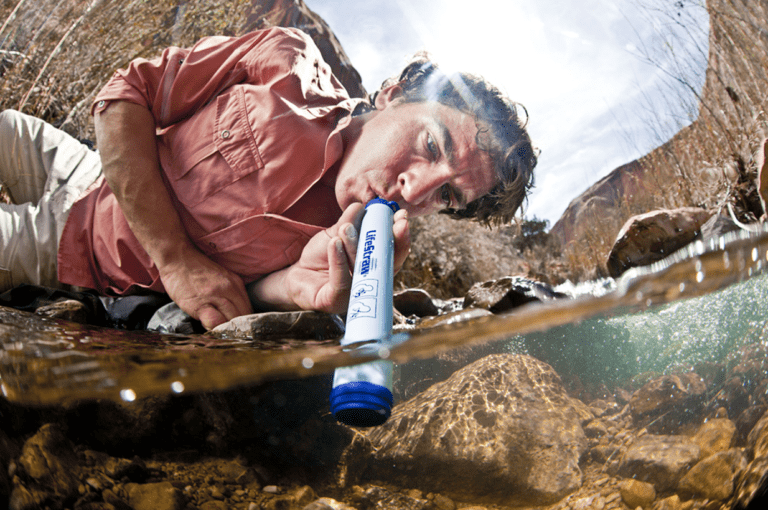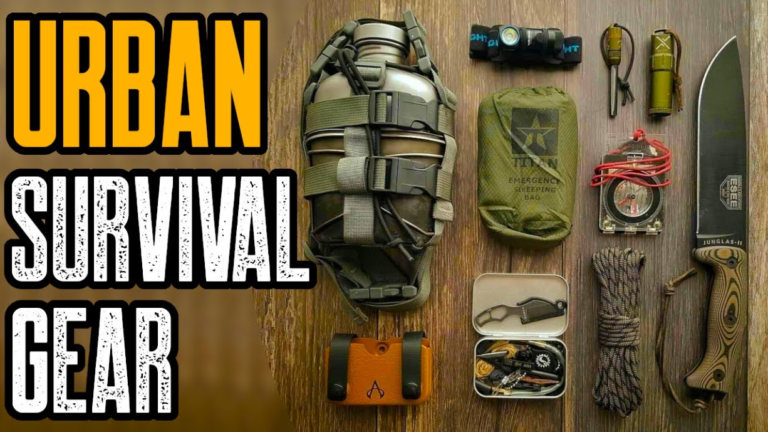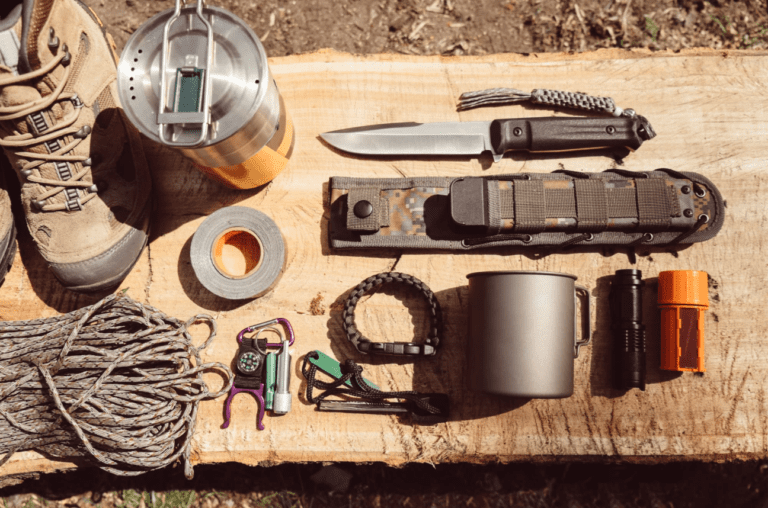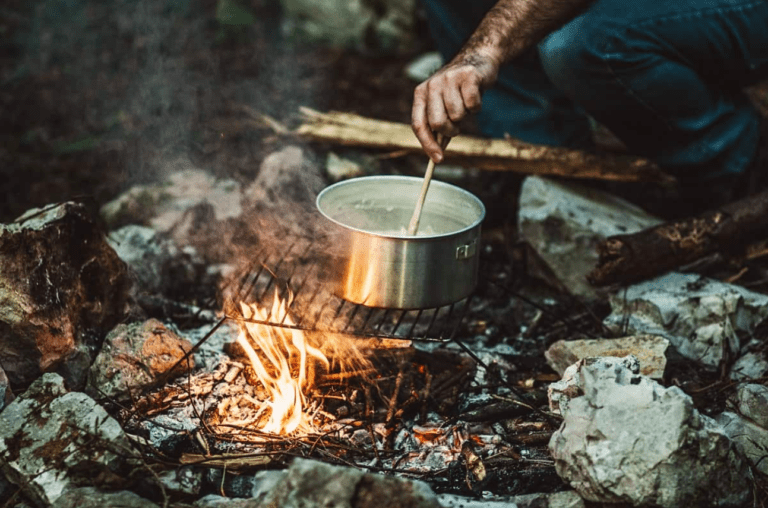The Best Survival Gloves
Gloves are like a second skin when you’re in a survival situation. They protect your hands when you need them most. No one should plan on sitting down during an emergency—there will be a lot to do and a good pair of survival gloves will protect your bits while you’re done.
There are many brands and types to choose from when it comes to gloves. This is where we come in. We’ve researched the best survival gloves, tested each of them, and now the results are in: the best overall, a tactical option, and a home option. If you need gloves that will keep you going in a survival situation, one of our tips will help keep you up to speed.
Gloves required

There are various situations where survival gloves are necessary, whether it is indoors or outdoors, during work at home or in the wilderness.
- Here are some important activities and situations in which you may want to carry gloves for complete protection:
- Riding a motorcycle
- Shooting or hunting
- Operation of machinery
- Use of electronics and computers outside
- Harsh/cold/snowy weather conditions when you are outdoors/in the forest (camping, trekking, hiking, climbing, etc.)
Types of Gloves
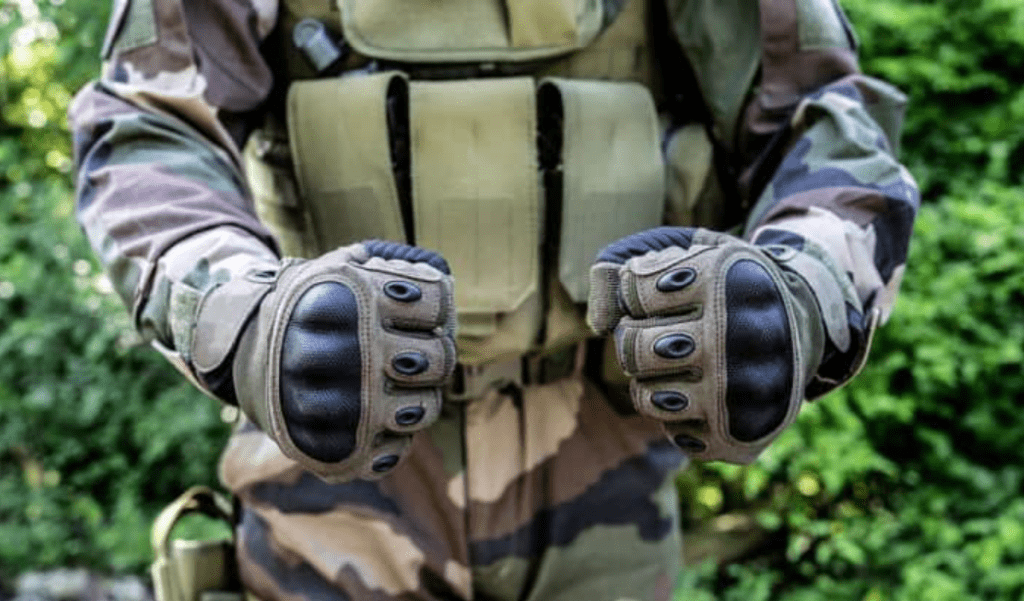
Today’s variety of gloves allows you to choose from basic gloves to highly technical gloves. Depending on your use, you’ll need to choose gloves that suit your activities and the weather.
- Work gloves: These types of gloves can be either plain, or made of jersey-woven cotton, heavy leather and hides. They are designed to protect your hands from sharp objects, rough materials, wood debris, rocks, branches, etc. They also protect your hands from blisters and the sharp edges of the tools you’re operating.
- Cold Weather Gloves: These gloves are designed to protect your hands in cold weather. Some gloves may be waterproof and may even protect against snow. These gloves can be heavy and therefore not suitable for hard work and use. As for tear resistance and durability, they can vary depending on the material used for these gloves.
- Technical Gloves: Thin gloves that can be made from synthetic materials. Their palms are usually smooth and slightly textured. Technical gloves are designed for excellent dexterity when handling tools, parts and guns. They provide protection from scratches as well as leather toes. Some technical gloves feature a reinforced palm or leather and may come with additional padding on the palm, back or hand or finger areas. These are great gloves for many activities. Thin gloves can be worn inside cold weather gloves or heavy gloves, as a liner. Keep in mind that if you use these types of gloves continuously, they will only last for a few months.
- Flame Resistant/Flame Retardant Gloves: Make no mistake, as these gloves are not the same. Flame-resistant gloves are made of inherently non-flammable materials, and therefore will not melt when exposed to extreme heat and flames. On the other hand, flame retardant gloves are chemically treated so that they burn slowly or are self-extinguishing. If you need these types of gloves, it is best to consult an expert before choosing between the two.
- Tactical Gloves: Most tactical gloves feature elements of both work and technical gloves. This means they provide great dexterity and can be more durable than your average technical glove. Often times, these gloves will be reinforced at the fingers and back of the hand. These types of gloves are slightly more expensive than other gloves. However, you don’t always have to go for the most expensive just because a certain brand produces them. Even inexpensive tactical gloves may be sufficient for your purposes.
Things to consider when choosing gloves
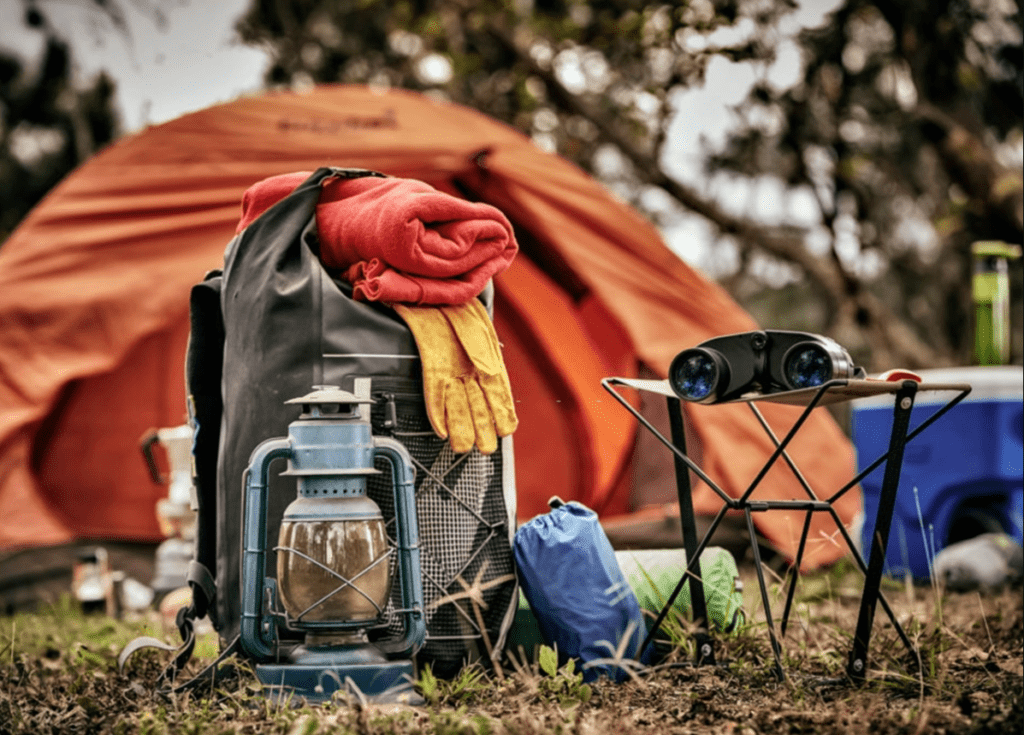
Before choosing and purchasing your gloves, there are a few important factors to consider, so you’ll know to choose the gloves that are best for your tasks, activities, and goals. Let us now take a look at these factors.
- Protection: The main purpose of gloves is of course to protect your hands and fingers. Good gloves protect against cuts, scrapes, combat scenarios, blisters, cold weather. Again, this protection varies by glove type. Knuckles are extremely susceptible to cuts, breaks and splits. Therefore, a good pair of gloves will protect them.
- Ease of use: It is important that your gloves are easy to use. A good pair of gloves is one that allows you to easily and safely work on the task at hand. If your work requires good dexterity, you don’t need thick and cow gloves. If you want to chop wood or move rocks, your gloves should be more nitrile-lined than polyester. In any survival situation, it is advisable to carry a few pairs of gloves to rotate and change when needed.
- Grip: Grip is as important as protection. Some gloves will feature a palm that is dipped in nitrile and specially designed finger pads to aid in grip. There are even gloves that feature magnets built into the fingertips. It is designed to help pick up gray patches and nails on the ground. Different gloves feature different grip capabilities. So, choose the type of glove that suits your needs, goals and tasks.
- Durability: One thing you have to know is where you’re going to wear those gloves. It’s inevitable that gloves will tear with time and use, so keep a few pairs of gloves for backup use. Therefore, it is important to choose high-quality gloves (according to the task at hand), so that you can do the job properly and at the same time protect your hands. But, remember that gloves will eventually tear, and this varies from one type of glove to another.
- Insulated Gloves: These are gloves that are able to keep your hands warm. Choose these if you are going to be experiencing cold or freezing weather conditions. However, you should remember that the more you work with your hands, the less you will need gloves that have an extra layer of insulation.
- Waterproof: Consider these gloves only if you really need them. They can be used for fishing, handling fish, reaching water, or when it rains. However, these types of gloves are not mandatory in your bag.
- Touch screen compatibility: This factor is not as important as the one above, but still worth considering. Consider whether you need gloves that are touchscreen compatible, whether working with a laptop or smartphone outdoors, in the wilderness or in the cold. This factor can be considered as a bonus.
Table of Contents (jump to a section)
- Best survival gloves
- Best tactical gloves
- Best household gloves
- Everything we recommend.
- The gloves we compared.
- What to look for
- How to use survival gloves
- Who needs survival gloves?
- Mechanix Wear Material4X M-Pact Gloves
- Best survival gloves
- MW Material4X M-Pact gloves
- Highly durable, protective, and efficient
These synthetic leather gloves not only protect your hands—they do it better and longer than any other glove.
Mechanic swears has made a beast with these gloves. ‘Artificial at our top?’ You might ask, but this is no bargain suede one-size-fits-all glove. These bad boys have four times the wear durability of leather, and as if that’s not enough—they’re twice as strong in all normal wear spots. In a survival situation, you may need to rely on your gloves for a long time, and that’s why these gloves absolutely destroy the rest of the competition. They take whatever you throw at them and can withstand the absolute worst conditions for several tough months (or years of just daily use!)!
Break out a pair of Mechanix Wear Material4X M-Pact Gloves and add them to any survival kit as they are perfect for the wide range of situations you might encounter with durability to boot.
Best tactical gloves
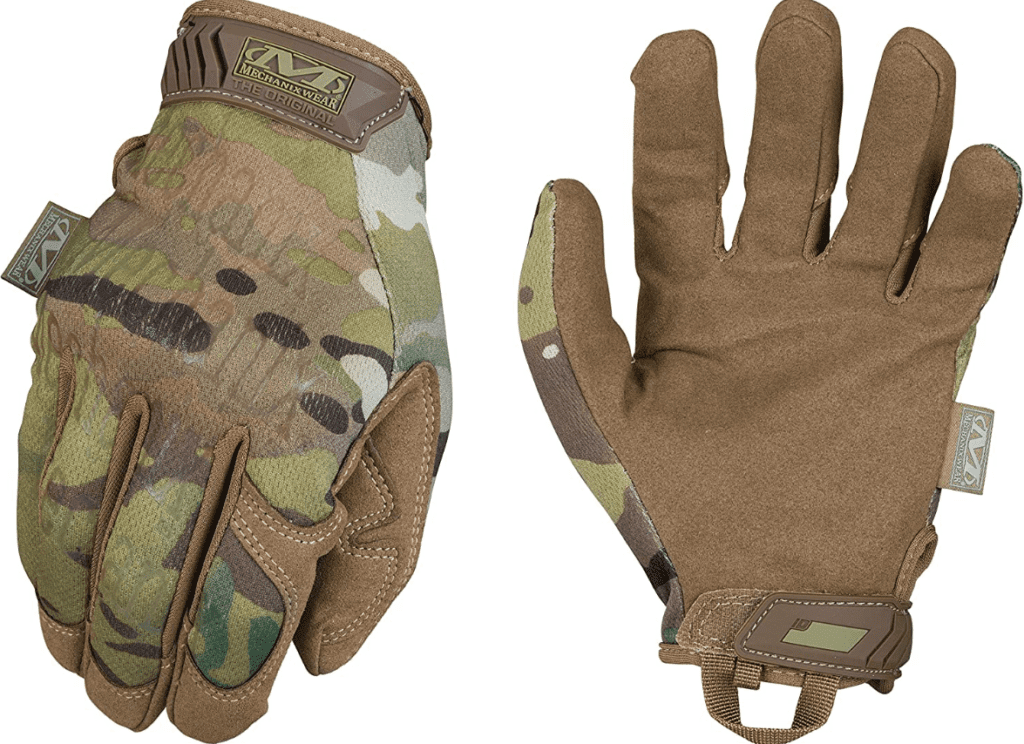
MW Secret Tactical Gloves
Strategic, proven, and reliable
Trusted by operators, original tactical gloves are still the most solid choice available.
Mechanix Wear has a lot of glove options and has earned the second spot in our recommendations. These gloves have been beloved in the tactical and shooting community for decades and are hard to beat for the price. You get a light touch with good durability at a reasonable price—what’s not to love?
Mechanix Wear Covert Tactical Gloves make it into the kits of operators around the world in a variety of fields. They are simple, effective solutions that are tried and true. They now come in different thicknesses (0.5mm), a wide range of colors, and even a useful fast-fit version if you want to use them for EDC.
Best household gloves
CLC Handyman Work Gloves
Tactile, tough, and well equipped
Working all day requires gloves that will last, and Custom Leathercraft delivers with these top-of-the-line work gloves.
Custom Leathercraft provides us with a pair of gloves with padding and stretch in all the right places, making their work gloves fit ‘like a glove’. Strap these bad boys to your wrists and you can knock out any project around the homesteading. These aren’t bulky work gloves off the hardware store shelf—these gloves let you retain your sense of touch and can even be used on a touchscreen.
Slap on a pair of CLC handyman work gloves to organize your home space (or if you need solid gloves for working around your non-domestic home). Preference is given to those who do real work on their acreage every day.
We Recommended:
- MW Material4X M-Pact gloves
These synthetic leather gloves not only protect your hands—they do it better and longer than any other glove.
- MW Secret Tactical Gloves
Trusted by operators, original tactical gloves are still the most solid choice available.
- CLC Handyman Work Gloves
Working all day requires gloves that will last, and Custom Leathercraft delivers with these top-of-the-line work gloves.
The gloves we compared.
Our research narrowed the field to several glove brands and types that we tested: Mechanix Wear, 5.11, Custom Leathercraft, Ironclad, Carhartt, Magpul, Mission Made, Helikon-Tex, Wells Lamont, and more.
There are many brands that make gloves these days with a wide range of prices and intended uses. When you’re checking out tactical glove brands, you’ll find many brands shipped from China that are essentially the same. None of them made the cut in our tests, so you won’t find them in our recommendations. You can see our full list of review criteria for what to look for below, along with an explanation of each.
We’re always on the lookout for new and better devices, so if you have a pair that’s kind of cool, let us know in the comments. We review most of our tested gear annually, so we can always get it in the next roundup round and see if it makes the cut and beats out our top picks.
What to look for
There are several important features to look for in the best survival gloves.
- Value
- Hand protection
- grip
- Durability
- Versatility
When you get the right mix of them, you can find reliable gloves that will keep you going in emergency situations. Below, we break down what each of these features means for a truly reliable pair of gloves:
Value: Cost vs. Benefit
The amount of money you spend on something like gloves shouldn’t blow your budget. Having a pair is better than none, but the same applies to other tools and gear you might need in an emergency. Instead of just spending lavishly, budget according to your risk and your needs.
On the other hand, you don’t want to go too cheap. You can find work gloves in big box store bargain bins that won’t hold a candle to our tactical picks. Don’t skimp when it comes to something you rely on in an emergency.
You never want to spend too much money on one resource, especially something like gloves or clothing. It’s best to diversify your equipment and gear to ensure you’re covered for a wide range of scenarios. There’s a sweet spot where you get more value than great features that don’t cost a fortune, which is where our top picks sit.
Hand protection
An important function of a good pair of survival gloves is simply to protect your hands. In most emergency and survival situations, you’ll depend on your hands to perform many tasks, and you’ll want to prevent scrapes, blisters, etc.
Durable materials and a good fit are key to keeping your hands safe and secure when you need them.
Grip
Gloves aren’t worth it if they can’t help you grip something. Some gloves we tried completely lost their grip when they got wet—not ideal for a wide range of disasters.
You want the glove to improve your grip, not let it get away from you when you need it. Gloves with a stronger grip greatly improve the functionality and versatility of the gloves, but you also need to make sure the gloves fit well to take advantage of this.
Durability
Durability counts a lot when it comes to survival clothing and gear. You don’t want to wear holes in the fingers of your gloves, and you don’t want the closure to wear off too quickly.
Gloves take a beating—especially in emergencies and survival situations. You’ll want gloves that can hold up to whatever you throw at them and keep going without wearing thin.
That said, you still have to consider the toughest gloves on the market. Keep gloves dry and as clean as possible.
Our top pick blows away the competition in this category and even beats out the toughest leather gloves we’ve tested. The synthetic material – with additional layers of material at all high wear points – proved extremely durable and effective in a wide range of weather conditions. They were able to hold together through all kinds of tasks and weather conditions making them ideal for any survival scenario.
Versatility
Gloves come with a few versatile options that target specific tasks. Options you may want to consider for survival include:
- Fingerless Gloves – These may have a better tactile feel for hygiene tasks. You’ll find shooters who swear by them, but keep in mind that this compromises hand safety.
- Cut and stab resistance – You’ll find operators who may encounter blades in their jobs (police) prefer this as an option. It’s nice to be able to hold the knife blade when you need to and not have it go through your glove, but you’re going to sacrifice some flexibility, tactile feel, and durability.
- Anti-Vibration – Typically for heavy equipment operations, anti-vibration gloves are meant to slow down the vibrations from transferring to your hands and numbing them over time.
- Impact Knuckles – Padded knuckles are great for not hitting your hand against a hard surface (like a car frame) and hurting something. Some tactical options go so far as to put hard material outside the knuckle padding for striking.
- Fast Fit – We’re huge fans of flexible wrist ‘Fast Fit’ gloves for EDC, and use them all the time. We recommend hook-and-loop closure gloves in this review guide for a better fit and grip—but we’ll still use the FastFit gloves every day.
- Cold conditions – Insulated gloves are best if you live in a cold climate. You may sacrifice grip strength and tactile feel for warmth, but it can be worth it when it gets below freezing.
You may also choose to have more than one pair of survival gloves to expand your options in an emergency, and if you do, it won’t hurt to diversify some of the versatile options above.
How to use survival gloves
Survival gloves need to be able to handle a wide range of tasks – from building a bushcraft shelter in the jungle to getting a good grip on a silcock key to accessing fresh water in an urban area. The amount of manual labor you will do in a survival situation is almost always more than you expect.
Natural disasters are especially taxing on your hands. You will be digging holes during hurricanes and floods. Debris removal after storms and earthquakes.
Any pair of gloves can provide protection from even small amounts of alpha particle radiation.
Gloves come in handy for all situations, and you’ll want to make sure your survival gloves can hold up to anything thrown at them.
To do this, you’ll want to take care of them. Some good tips for keeping your gloves usable include:
- Break Them Out – Don’t take your gloves out of the pack in an emergency and expect them to be comfortable and blister-proof. Wear them a few times before an emergency to test the fit and adjust them to your hands.
- Keep Them Dry – You don’t have to avoid getting them wet… but you do want to make sure you dry them thoroughly after they get wet.
- Keep them clean – Depending on the material, you can either wash your gloves or dry them. Stay away from abrasive cleaners.
- Repair them early – If you start to notice holes or seam separation, repair your gloves early and often. Holes and split seams can rip easily and often lead to missing fingers or open palms. Of course, we’ve already got the perfect repair kit.
If you take care of your gloves, they will take care of your hands.
Who needs survival gloves?
If you have hands and can put in some work, you can use a solid pair of gloves.
They are a no-brainer for each of our survival kit checklists.
Gloves are essential for:
- In-Place Survival Kit
- Bug Out Bag
- Get a home bag.
- Carrie every day
- Car kits
Of course, you can always use gloves for emergencies and things beyond survival kits. We actually encourage it—don’t let gloves sit in your bags and kits without breaking them in first. You may not want to do all of your yard work with the gloves you’ve reserved for your kits, but you also want to make sure they’re comfortable and fit well.
How we review products: We research thoroughly before selecting the best products to review. We consult with experts in the field to better understand what makes gear great. Hours are spent at the end of the field-testing gear under stressful conditions. We assign performance criteria and objectively rate each test item. You can support us through our freely selected links, which can earn you a commission at no extra cost. After our review process, some items reviewed end up in our giveaway.
Sources and references
All of our experience and testing to determine the best survival gloves is worthless without our research sources and reference list. We relied on them for book knowledge which we combined with hands-on testing and practical military and training experience:
Dianet, I. (2012). Procedures for evaluating gloves in relation to effects on hand performance capabilities. Activity measurement. Volume 55, Issue 11, Pages 1429-1451. (Source).
Kinoshita, H. (2010). Effect of gloves on prehensile forces during lifting and holding tasks. Activity measurement. Volume 42, Issue 10, Pages 1372-1385. (Source)
Wahlberg, J., Boman, A., Estlander, T. & Maibach, H. (2004). Protective gloves for professional use. CRC Press. (Boca Raton, FL). (Source)
The last word
In an emergency, you’ll need to rely on a solid pair of survival gloves to provide the stability, grip, and hand protection you’ll need to tackle anything.
To go with a solid pair of gloves, you should also consider a few other clothing items that can help keep you safe:
- The perfect hats for preparedness and survival
- Best survival socks for preppers and survivalists.
We’ve covered a lot of information, but as always: If you have any questions, let us know and we’ll be happy to help. Our research and testing have shown that MW Material4X M-Pact gloves are the best option for value, hand protection, grip, durability, and versatility. If you take our suggestion and grab one of these gloves – make sure you break them in to work to make sure you get a good fit.
Keep exploring, be prepared, and stay safe.


